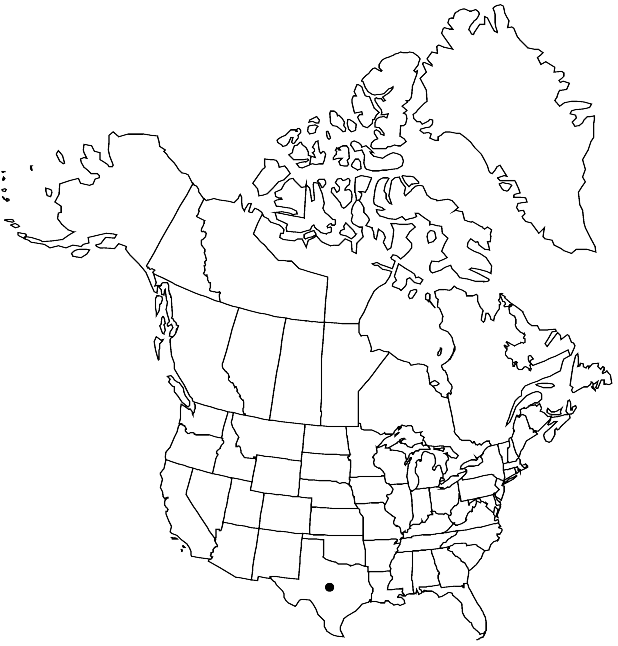Leavenworthia texana
Sida 12: 239, fig. 1. 1987.
Stems (when present) 1–2 dm. Basal leaves: petiole 1.5–4 cm; blade 3.5–5 cm, lobes 0–4 on each side, margins shallowly dentate, terminal lobe transversely broadly oblong, 0.6–0.7 cm × 8–11 mm, (distinctly shorter than wide), considerably larger than lateral lobes, margins slightly lobed or shallowly dentate. Fruiting pedicels: solitary flowers 30–70 mm; racemes 20–40 mm. Flowers: sepals widely spreading, oblong-linear, 3.9–4.5 × 1.4–1.8 mm; petals spreading, bright yellow, narrowly obovate, 7.3–9 × 2–3 mm, claw dark yellow, 2.6–3.3 mm, apex shallowly emarginate, apical notch 0.1–0.3 mm deep; filaments: median 4–4.5 mm, lateral 2.2–2.5 mm; anthers 0.8–1.3 mm. Fruits oblong, 1.5–2.3 cm × 4–5 mm, smooth, latiseptate, (margined); valves thin; ovules 4–14 per ovary; style 1.7–3 mm. Seeds 3–3.5 mm diam.; wing 0.2–0.4 mm wide; embryo straight. 2n = 22.
Phenology: Flowering Mar–Apr.
Habitat: Pastures, seepage areas of rock outcrops
Elevation: 70-150 m
Discussion
Of conservation concern.
Leavenworthia texana is known only from San Augustine County. It is in the Center for Plant Conservation’s National Collection of Endangered Plants.
Rollins reduced Leavenworthia texana to a variety of L. aurea. The differences in petal color, shape and margin of the terminal lobe, and chromosome number clearly support recognition as distinct species.
Selected References
None.
